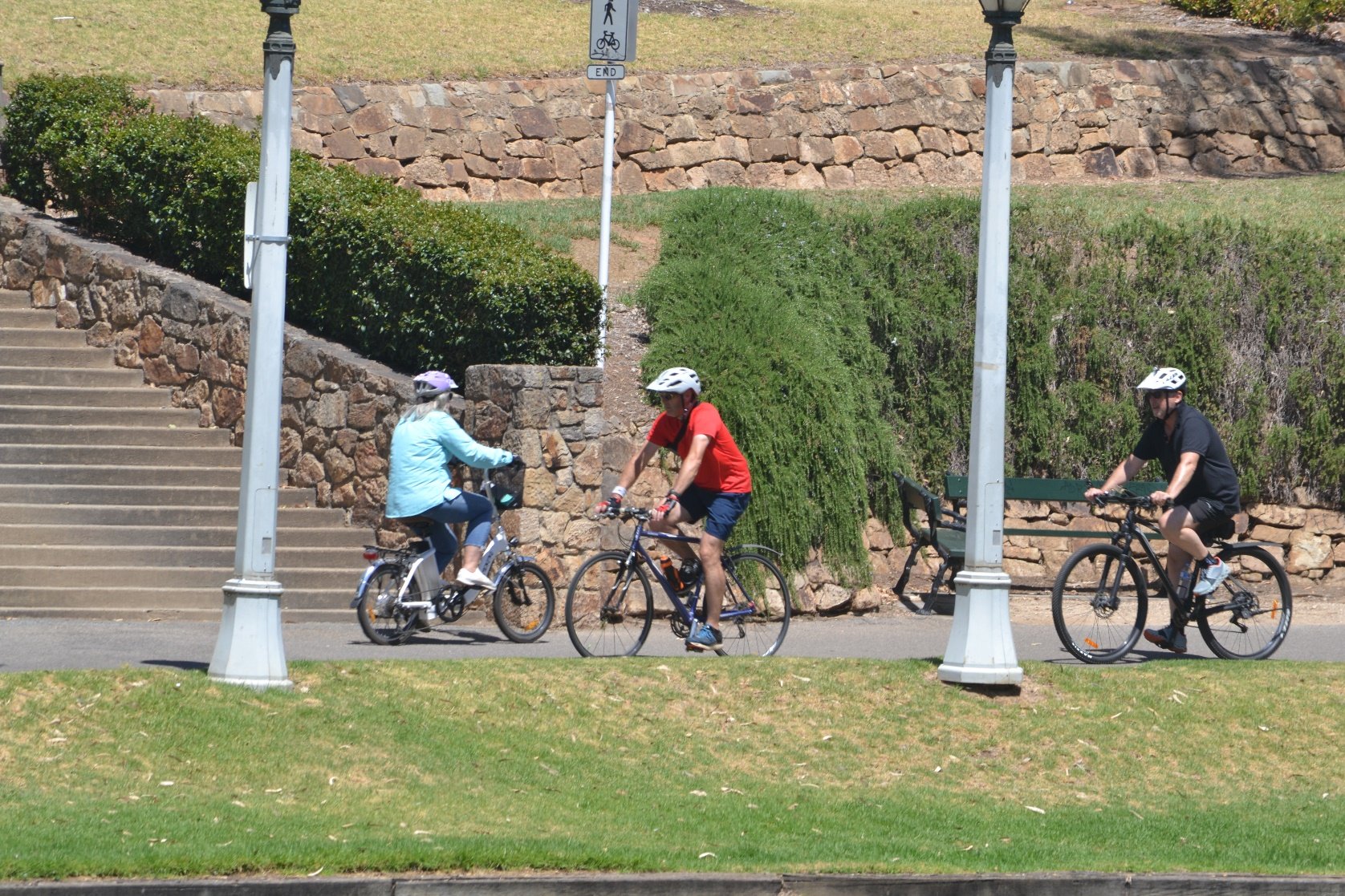How livable are we really? Healthy Liveable Cities Indicators Adelaide Score Card
David Bailey RPIA (Fellow) Active Living Coalition Project Officer, Associate Professor Carmel Williams Centre for HiAP Research Translation and Dr Hans Pieters, Urban and Regional Planning, UniSA.
Urban design and infrastructure planning plays a key role in creating liveable suburbs and towns and enabling healthy and sustainable communities.
Access to active transport options like cycling, walking and public transport, proximity to services such as shops, green space and other amenities are important features of a healthy urban environment, be it in Adelaide or our regions.
Health however is often not on the minds of urban planners and developers when planning and building our communities. Their focus is on economic and development opportunities and issues and health considerations are a second order priority. There are some promising signs that the urban planning and development community are beginning to recognise the important contribution and impact they can have on community health and wellbeing. For example, the Planning for Healthy Cities urban planning course at UniSA explicitly focuses on how urban planning and design can promote healthy living through enabling more physical activity, contact with nature, social interaction, and the consumption of nutritious food.
According to the Economist, Adelaide – until recently anyway - was the third most liveable City globally. A legacy of previous planning and development policies that put needs of people at the forefront of planning decisions. Current generations have the privilege of holding and sharing these urban design benefits for future generations. Yet this global ranking masks local challenges.
Active living is aspired by South Australians – Winter at Christies Beach 2022
Did you know less than half of Adelaideans live within 400m of a decent park? So when we are stressed, maybe experiencing all range of pressures and home doesn’t feel like home anymore – getting out into our communities can help. Walking can provide important health and wellbeing benefits. Having easy access to walking paths, where we can walk and experience trees, green space and other aspects of the natural world, meet neighbours, and exercise delivers many positive health and wellbeing benefits.
Did you know less than ¼ of Adelaideans live with employment nearby? This means most of us need to commute. With the costs of owning and driving a car going up, along with other cost pressures, alternative transport options are an important cost saving option. We know that people are more likely to cycle if they feel safe on the roads. This means ensuring bike lanes don’t stop suddenly at intersections, that there is separation between cycle lanes and cars, and networks connect to places people wish to go. To increase the number of South Australians cycling will require increased investment in safe cycling infrastructure – in particular within a densifying metropolitan Adelaide - and an increasing focus on health, wellbeing, and sustainability by urban planning and development decision makers.
Did you know more than a 1/3rd of us Adelaideans live more than 400m from regular public transport? If you are healthy and have the time to walk, this may not be a problem, but many South Australians have neither, so the main alternative is the car, or just go out less.
Did you know in 2020, 6% of South Australian’s spent money on cycling compared to 30% in NSW/Vic, 19% in Queensland and 9% in WA? The increasing cost of living, including fuel costs, and housing stress provides some of the incentives to increase cycling and other forms of active transport.
And you know traffic congestion is increasing in the middle ring suburbs of Adelaide. In 2018 Infrastructure Australia forecast congestion would increase even with the then planned initiatives, such as a greater tram network and more bikeways. These suburbs are increasingly becoming car parks where cars idle, costing time, money, lost opportunity, and generating greenhouse emissions and frustration.
There are very low rates of children and young people being active. Cost of participating in sport is a barrier. Time availability and traffic safety are the key barriers limiting parents supporting children walking or riding to school. Lack of greening such as trees for shade discourages people being active. Rates of physical activity are low in lower socio-economic communities and these communities are often served with lower quality of walking, cycling and public transport infrastructure and fewer destinations and end of trip facilities such as shopping centres and hospitals
Yet South Australians seek change
86% of South Australians want facilities accessible by walking and cycling. 60% strongly/somewhat favour directing more of the dedicated road funding into walking and cycling infrastructure. Importantly, 60% of South Australians support the need for reduced speeds in local streets[1].
A 2021 survey of over 600 RAA Members, three quarters would like to walk more, and a third a lot more.
.
Changing a 1km car trip to walk or cycle saves 0.22kg of CO2[1].
National research from multiple sources confirm the barriers to cycling that were identified in the SA research by the RAA. To change this we need more urban bikeways, off road lanes, trails, and other supports and then SA’s cycling participation rate should increase, which will also help to boost local economies with people spending locally and in turn, boost local businesses.
Every South Australian who is active 150 minutes a week[2] has better:
· Health
· Mental health
· Social connections
· Ability to make decisions.
These South Australians save the State Health budget $2588 annually.
Changing a 1km car trip to walk or cycle saves 0.22kg of CO2. Increasing walking and cycling can reduce the 28% contributed by ‘transport’ to greenhouse gases in SA.
Research affirms that regular physical activity improves physical and mental health and is a low carbon lifestyle.
“What gets measured Matters”
The challenge is to provide contemporary evidence that can influence our political and government leaders in ways that see healthy liveable cities becoming a shared priority.
The Healthy Liveable Cities Indicators Adelaide Score Card will provide up to date data to track progress and influence future planning and development decisions that will foster Adelaideans Liveability.
The Adelaide Score card acts as an advocacy, policy planning and accountability tool highlighting where there are opportunities for improvement and to showcase areas of success.
The Adelaide Scorecard has been prepared by Distinguished Professor Billie Giles-Corti, VC Professorial Research Fellow and Director of the Healthy Liveable Cities Lab. Adelaide is 1 city of 25 cities for which a scorecard has been prepared. The Scorecard is being reported about through the Urban Design, Health and Transport Lancet Series.
The Adelaide Scorecard is being launched on 20 September 2022
The Launch is being coordinated by the Centre for Health in All Policy Research Translation, the SA Active Living Coalition and University SA, and supported by Uniting Communities, RAA and Urban Futures Exchange.
David Bailey RPIA (Fellow) Active Living Coalition Project Officer, Associate Professor Carmel Williams Centre for HiAP Research Translation and Dr Hans Pieters, Urban and Regional Planning, UniSA
[1] What Australians Want National Heart Foundation 2020
[2] Active Lives Study 2019 orsr.sa.gov.au/about_us/publications



